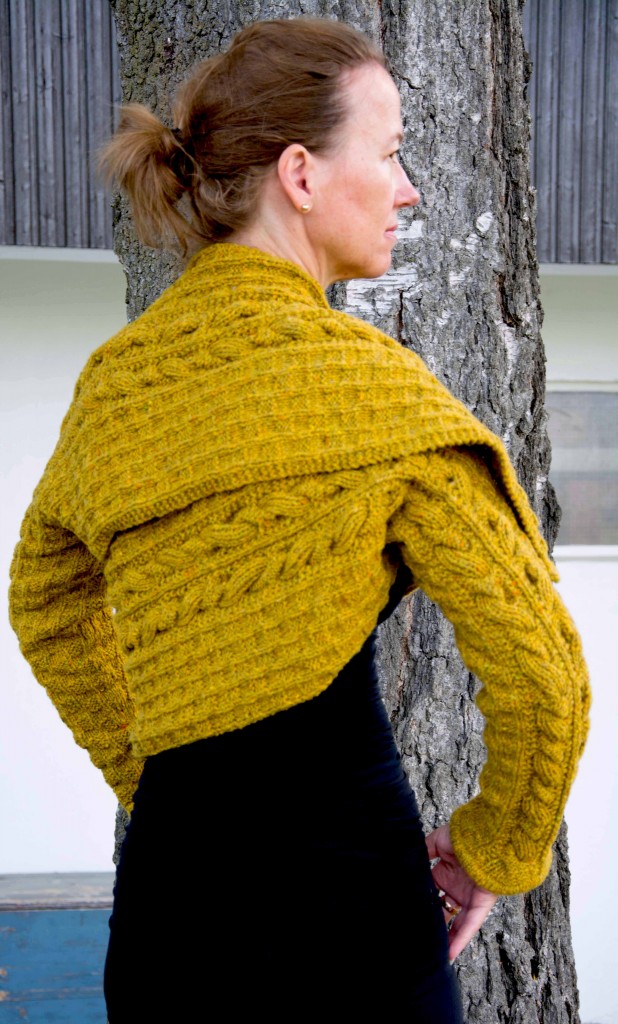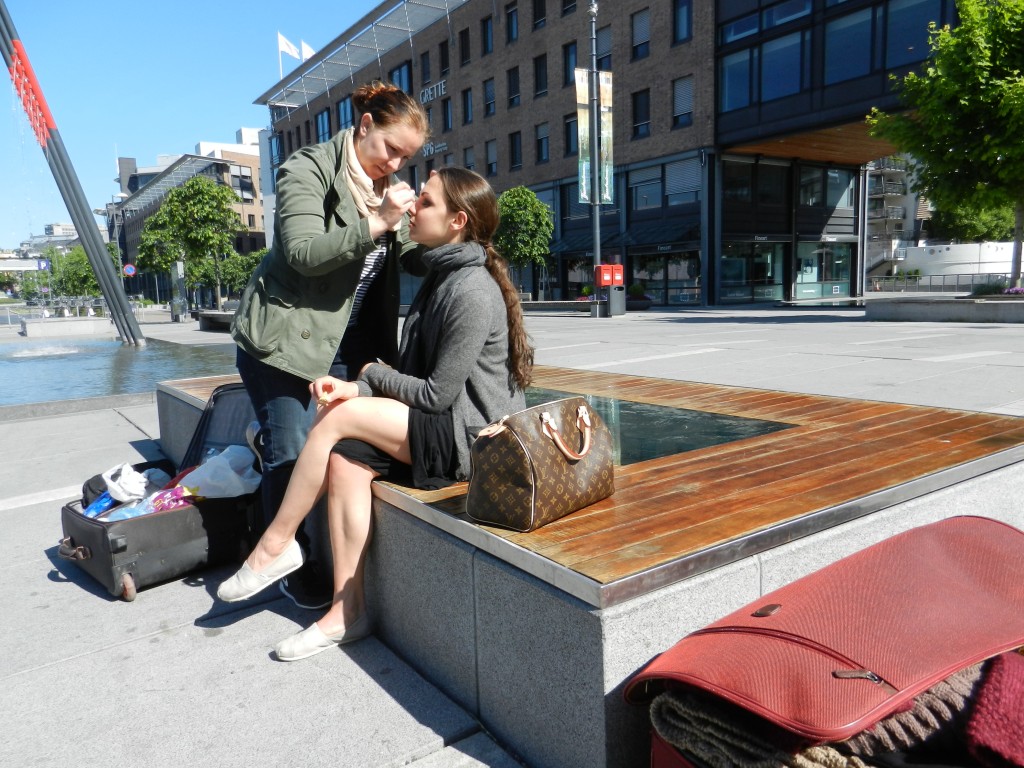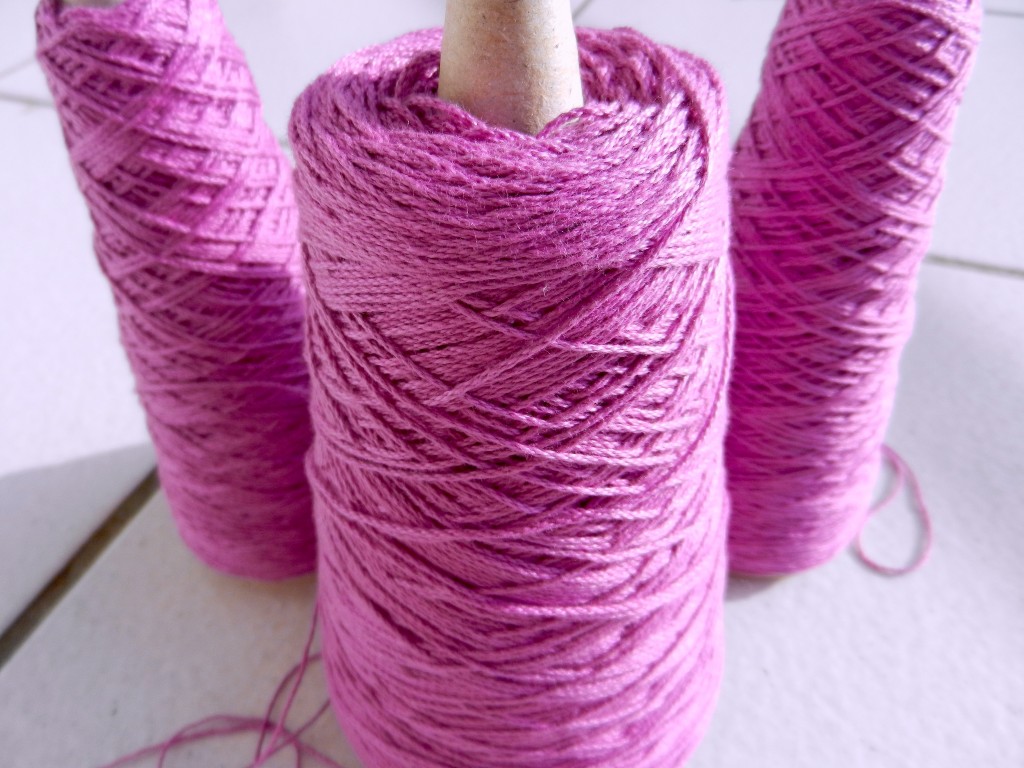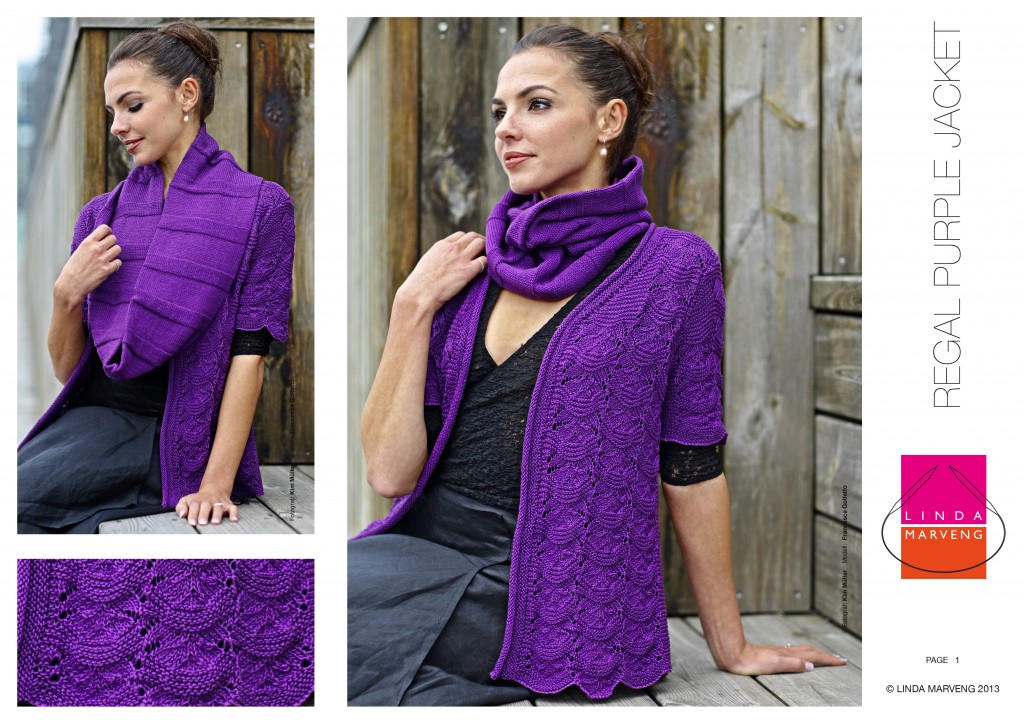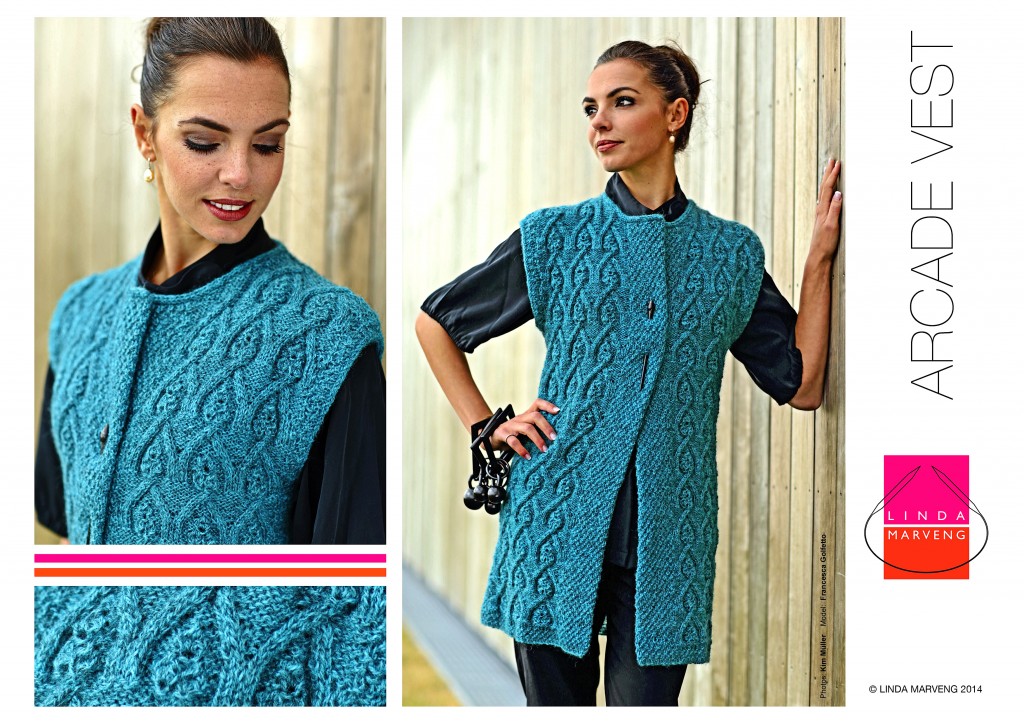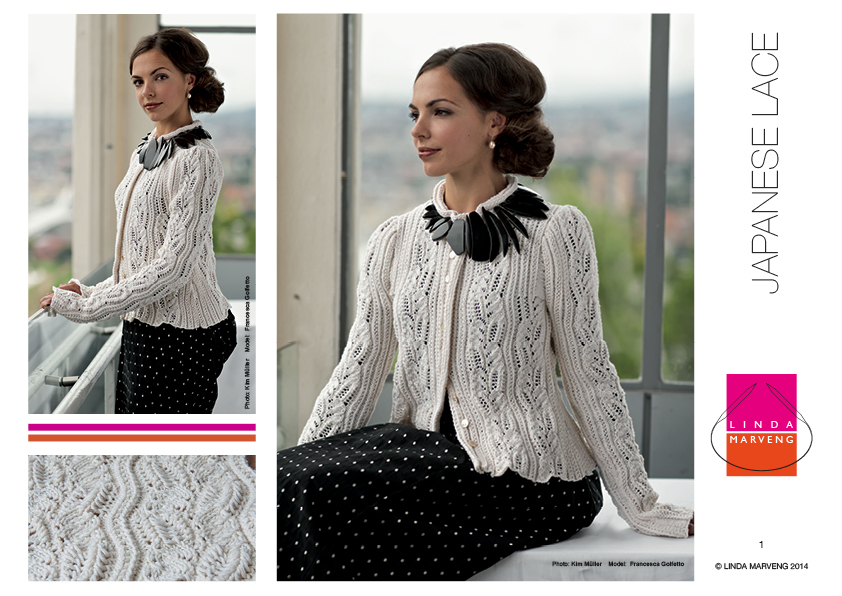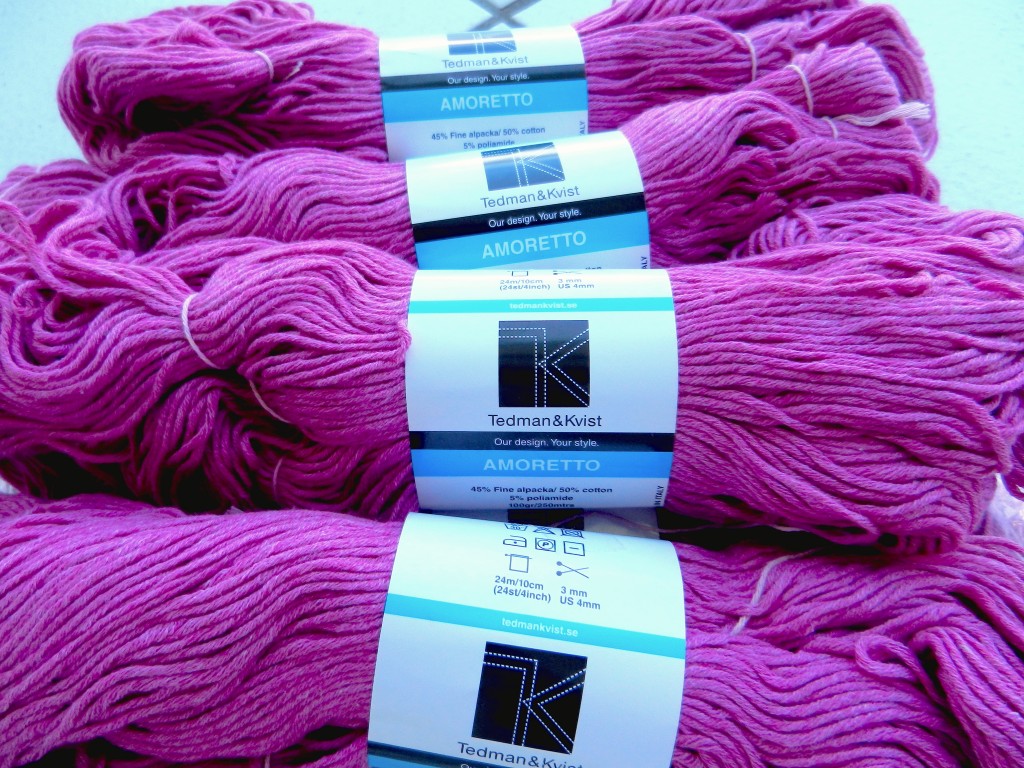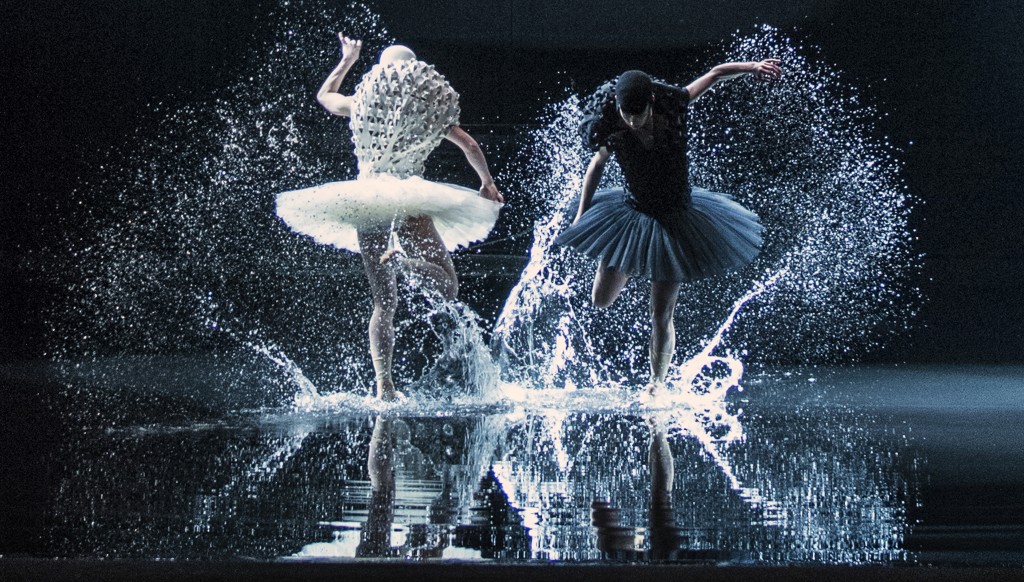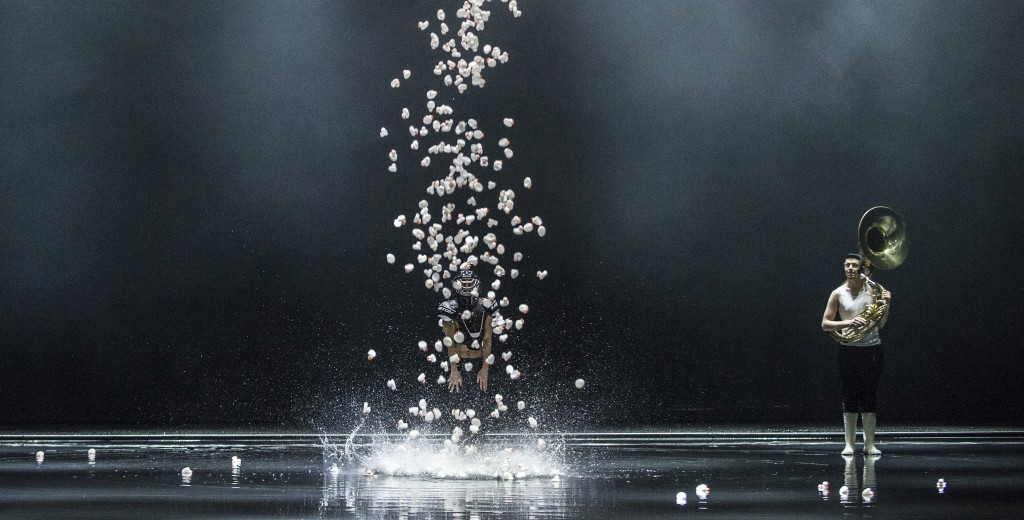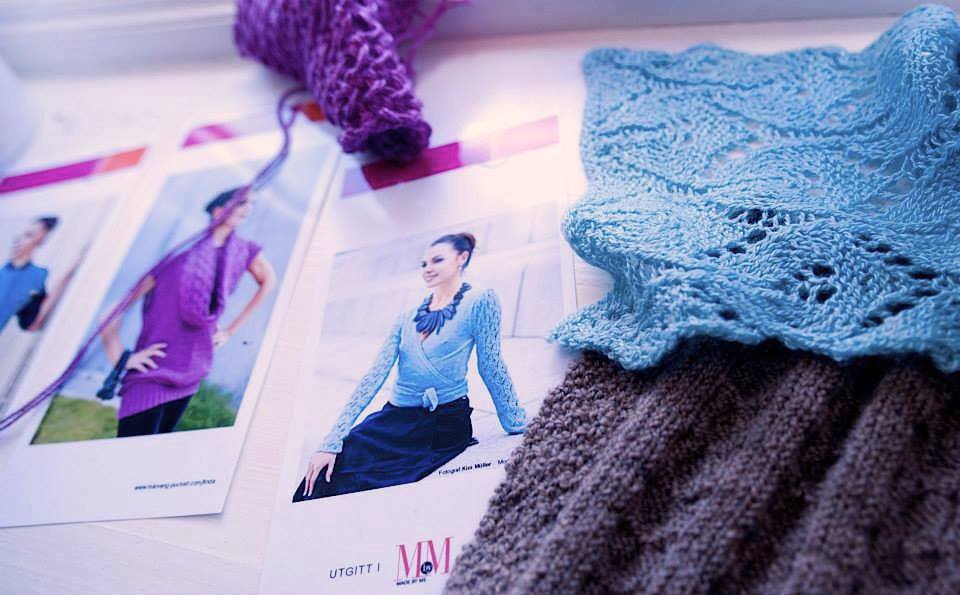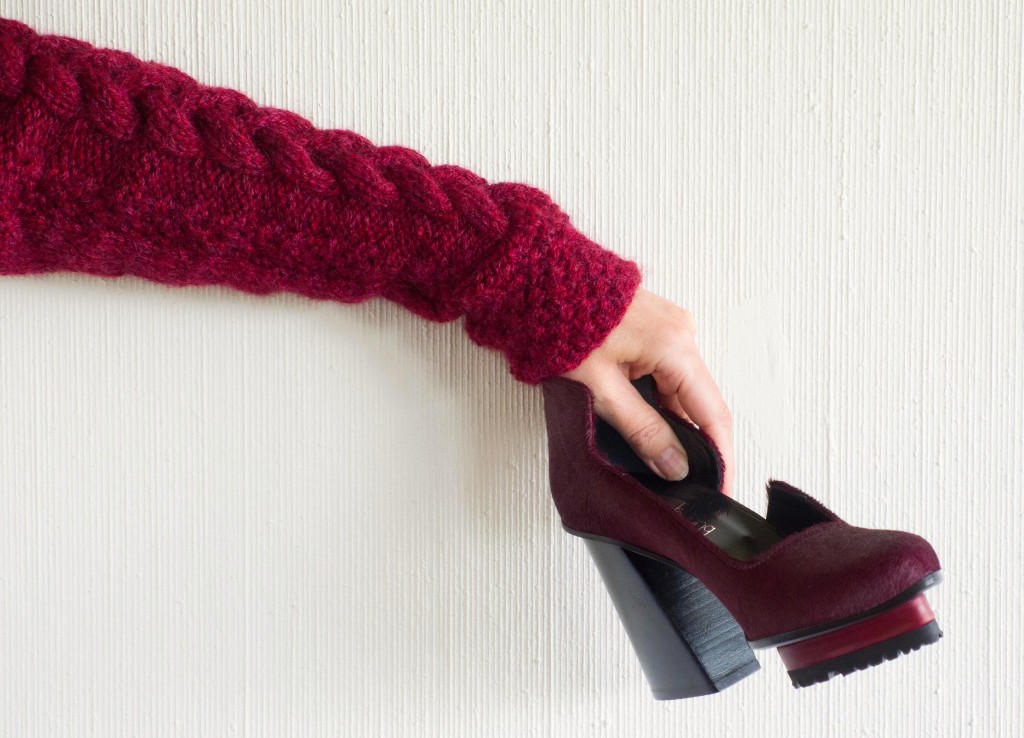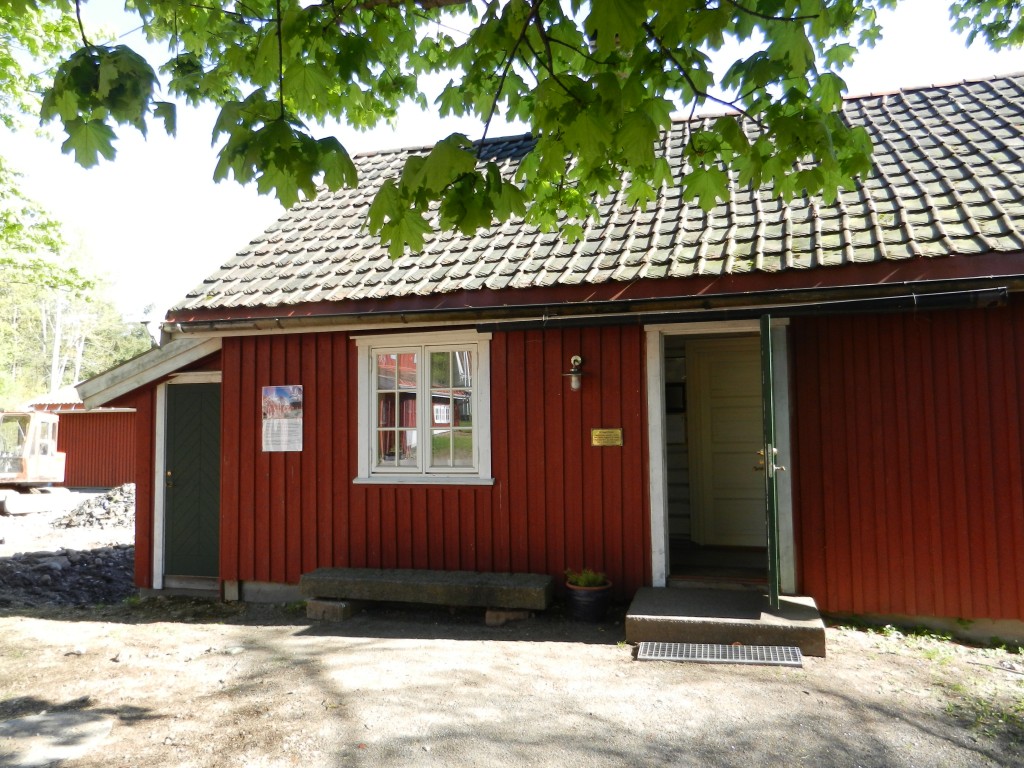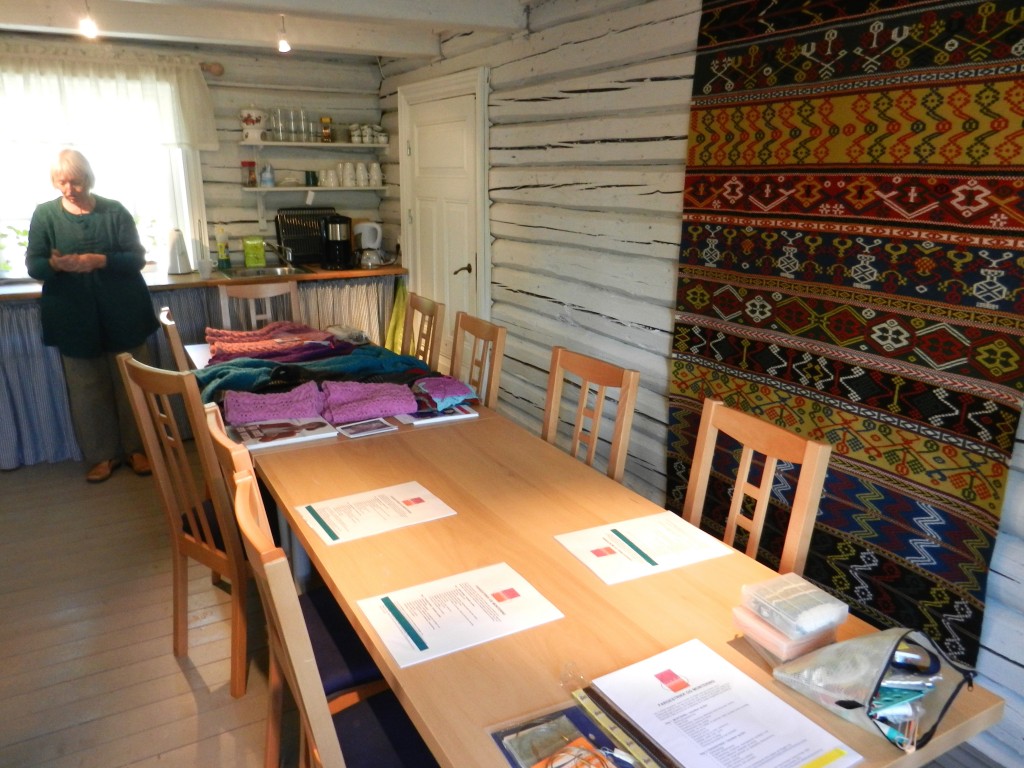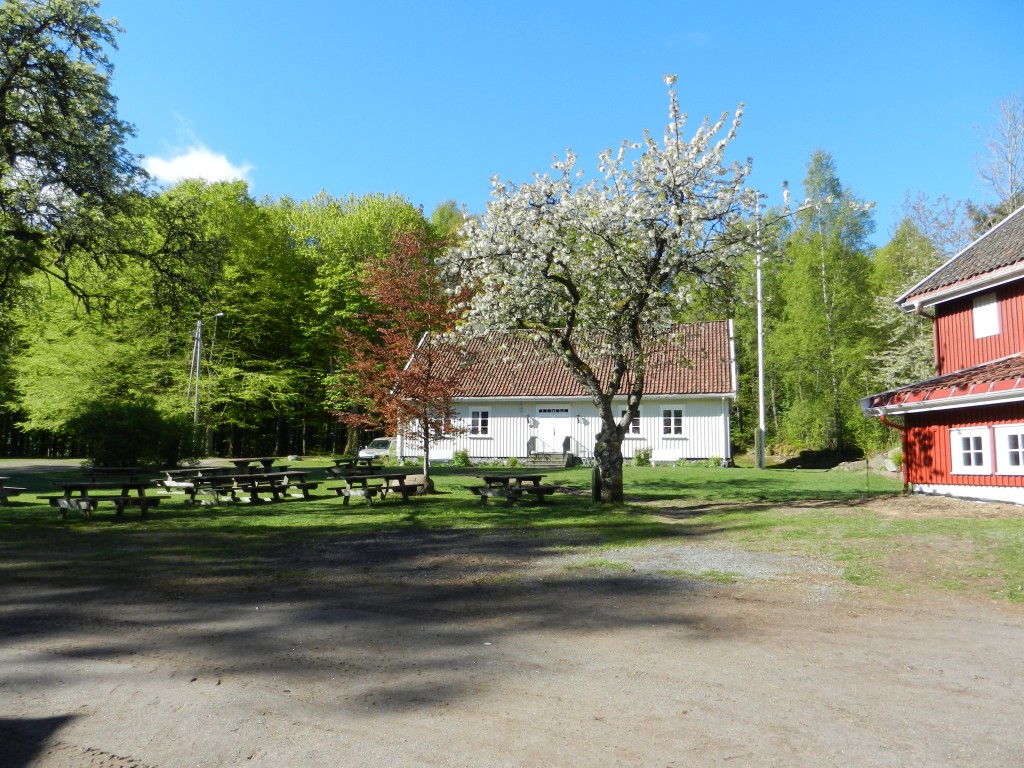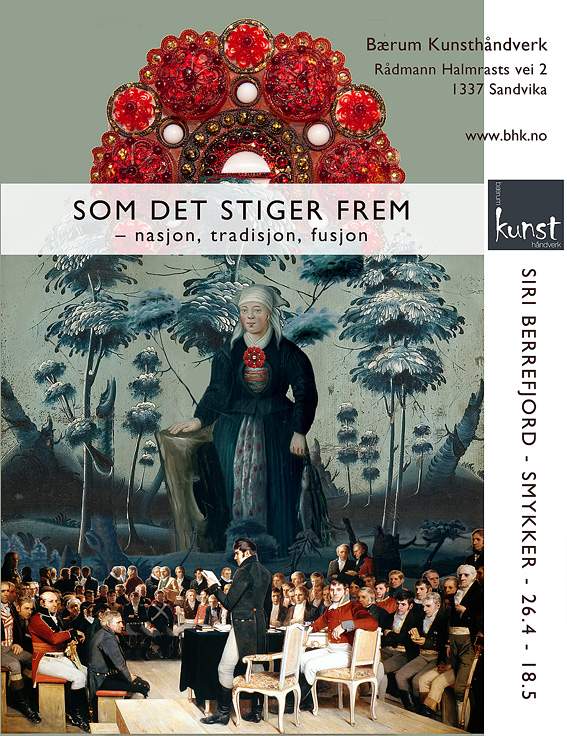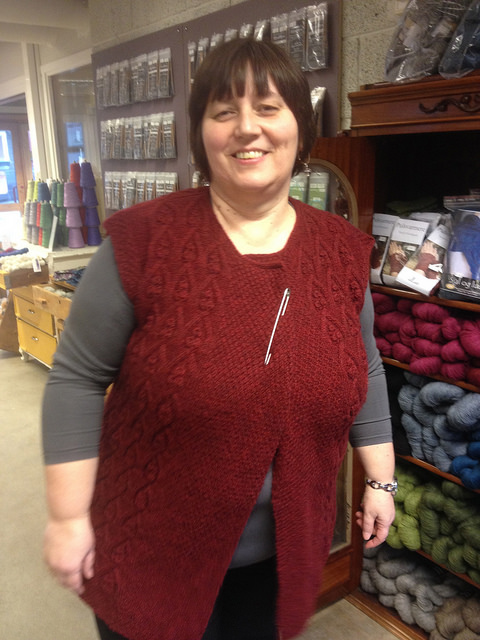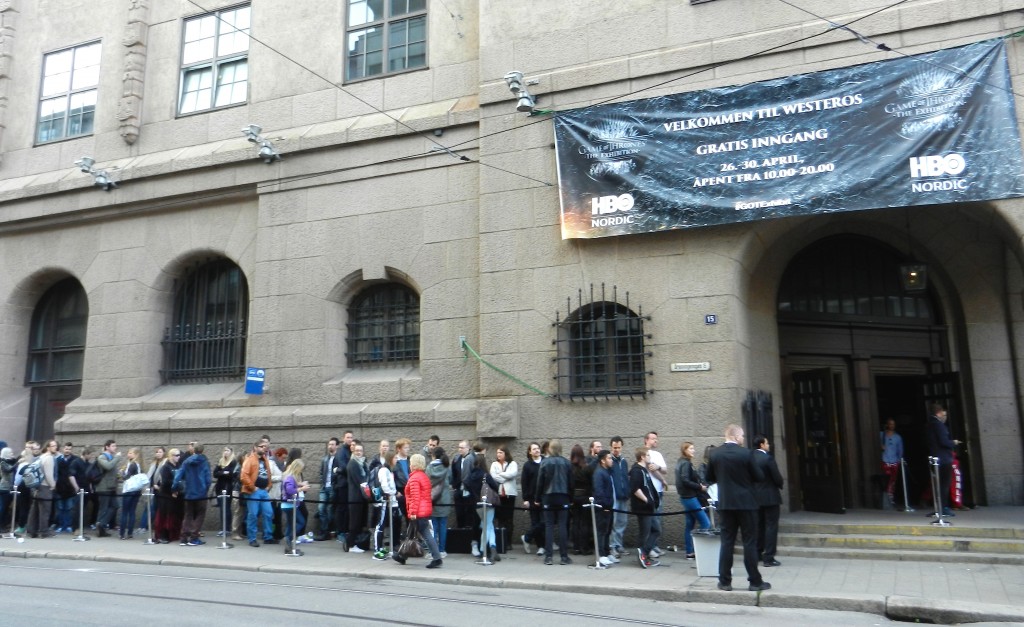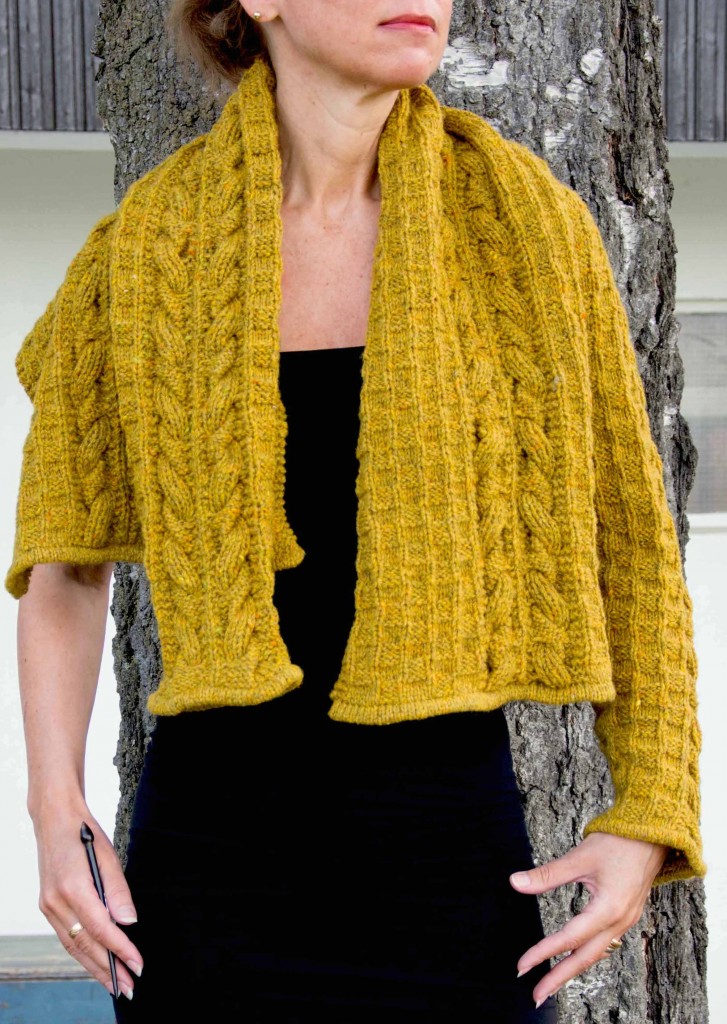 A sleeve that ends in a shawl, worked in reversible cables with two very different sides and lined by checks, made to drape and pin together as you wish. The cables are worked half in rib, half in reverse stockinette stitch, and provides a soft contrast to the curvy checks. Knit in the round to the armhole, then flat on the shawl to the end; a hem. Conceptual accessories with a modern shape. This was my idea for a design submission that I presented to the American yarn company Brooklyn Tweed, but it was not among the chosen ones, probably because it did not fit into their magazine collection.
A sleeve that ends in a shawl, worked in reversible cables with two very different sides and lined by checks, made to drape and pin together as you wish. The cables are worked half in rib, half in reverse stockinette stitch, and provides a soft contrast to the curvy checks. Knit in the round to the armhole, then flat on the shawl to the end; a hem. Conceptual accessories with a modern shape. This was my idea for a design submission that I presented to the American yarn company Brooklyn Tweed, but it was not among the chosen ones, probably because it did not fit into their magazine collection.
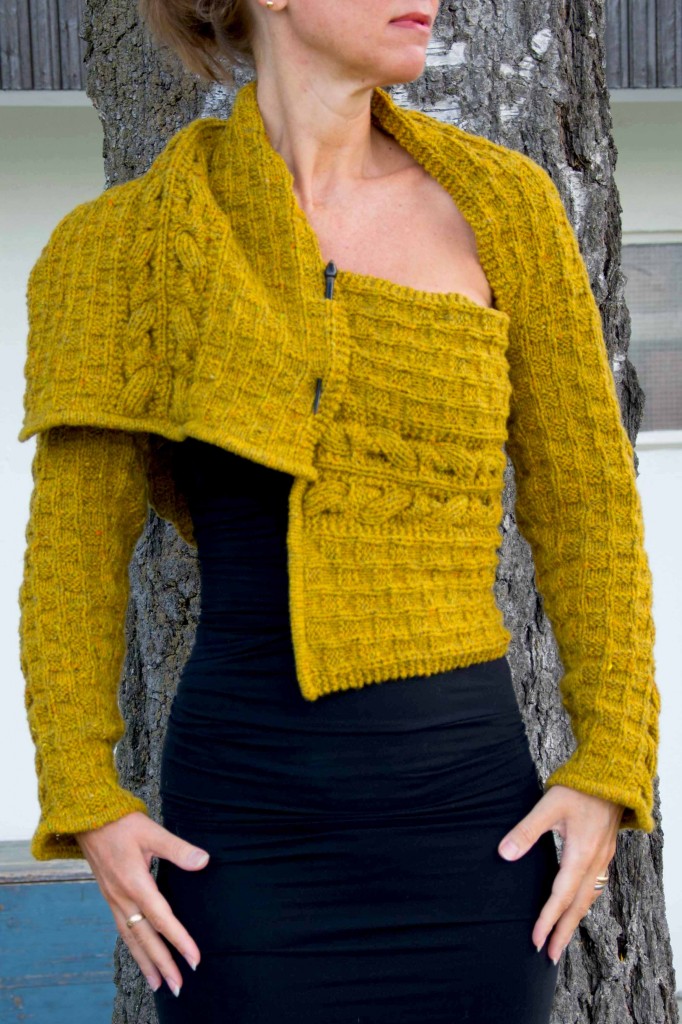 Anyway, it has been beautifully knitted by my test knitter Airin Hansen, aka Teodor on Ravelry, and will be published in Norwegian in Familiens Strikkebok, their special issue magazine in August, and the English pattern in my Ravelry Store. The Brooklyn Tweed yarns are not available in Norway so I made my own tweed with the added lustre from Ask-Hifa 2 made by Hillesvåg Ullvarefabrikk knitted together with Rowan Fine Tweed on a 4 mm/US 6 to make the cables pop. The finished result is more abstract than I had in mind, but still fun to drape around your body or just use one as a generous scarf. I did wonder whether to build in shoulder shaping in form of short row shaping and thought how marvelous it would be in lace weight and with a super long shawl part but since I had to be practical I went for maximum texture and shorter shawl length.
Anyway, it has been beautifully knitted by my test knitter Airin Hansen, aka Teodor on Ravelry, and will be published in Norwegian in Familiens Strikkebok, their special issue magazine in August, and the English pattern in my Ravelry Store. The Brooklyn Tweed yarns are not available in Norway so I made my own tweed with the added lustre from Ask-Hifa 2 made by Hillesvåg Ullvarefabrikk knitted together with Rowan Fine Tweed on a 4 mm/US 6 to make the cables pop. The finished result is more abstract than I had in mind, but still fun to drape around your body or just use one as a generous scarf. I did wonder whether to build in shoulder shaping in form of short row shaping and thought how marvelous it would be in lace weight and with a super long shawl part but since I had to be practical I went for maximum texture and shorter shawl length.
The shawl sleeves have already been professionally photographed on Francesca Golfetto, and they look stunning on her. I look forward to showing those photos to you.

